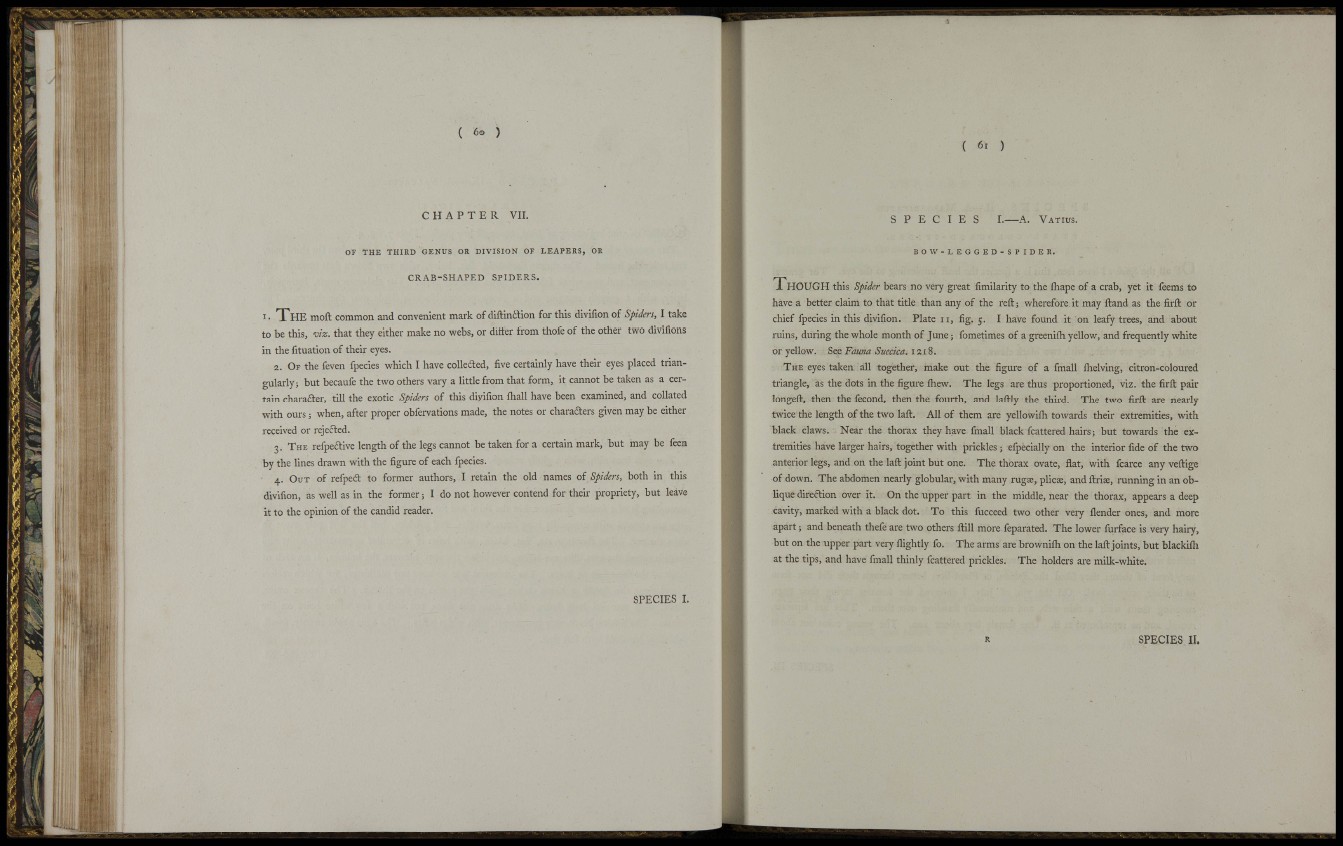
( 6o )
( 6r )
C H A P T E R VII.
o r THE THIRD GENUS OR DIVISION OF LEAPERS, OR
CRAB-SHAPED SPIDERS.
I • T h e moft common and convenient mark of diftinilion far this divifion of Spiders, I take
to be this, wz. that they either make no webs, or differ from thofe of the other two divifions
in the fituation of their eyes.
2. Of the feven fpecies which I have colledted, five certainly have their eyes placed triangularly;
but becaufe the two others vary a little from that form, it cannot be taken as a certain
charafler, till the exotic Spiders of this diyifion iliall have been examined, and collated
with ours; when, after proper obfervations made, the notes or charafters given may be either
received or rejefted.
3. The refpeftive length of the legs cannot be taken for a certain mark, but may be feen
by the lines drawn with the figure of each fpecies.
4. Out of refpeft to former authors, I retain the old names of Spiders, both in this
divifion, as well as in the former; I do not however contend for their propriety, but leave
it to the opinion of the candid reader.
i .4
S P E C I E S I.—A. VATIUS.
B O W - L E G G E D - S P I D E R .
T h o u g h this spider bears no very great fimilarity to the ihape of a crab, yet it feems to
have a better claim to that title than any of the reft; wherefore it may ftand as the firft or
chief fpecies in this divifion. Plate 11, fig. 5. I have found it on leafy trees, and about
ruins, during the whole month of June ; fometimes of a greenifti yellow, and frequently white
or yellow. See Fauna Suecica. 1218.
The eyes taken all together, make out the figure of a fmall ilielving, citron-coloured
triangle, as the dots in the figure Ihew. The legs are thus proportioned, viz. the firft pair
longeft, then the fécond, then the fourth, and laftly the third. The two firft are nearly
twice the length of the two laft. All of them are yellowilli towards their extremities, with
black claws. Near the thorax they have fmall black fcattered hairs; but towards the extremities
have larger hairs, together with prickles ; efpecially on the interior fide of the two
anterior legs, and on the laft jomt but one. The thorax ovate, flat, with fcarce any veftige
of down. The abdomen nearly globular, with many rugoe, plicoe, and ftrix, running in an oblique
direftion over it. On the upper part in the middle, near the thorax, appears a deep
cavity, marked with a black dot. To this fucceed two other very flender ones, and more
apart ; and beneath thefe are two others ftill more feparated. The lower furface is very haiiy,
but on the upper part very flightly fo. The arms are brownifli on the laft joints, but blackiih
at the tips, and have fmall thinly fcattered prickles. The holders are milk-white.
SPECIES I.
SPECIES II.